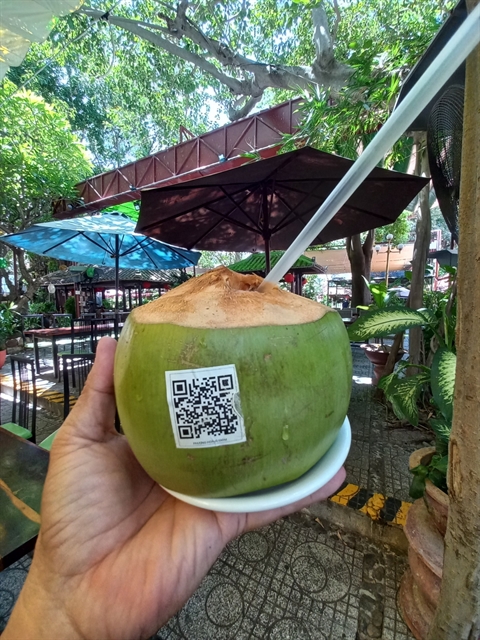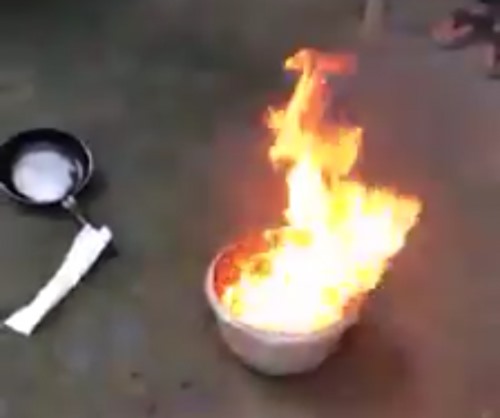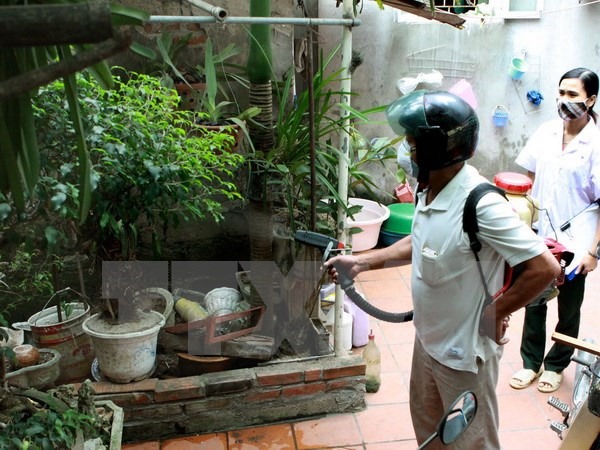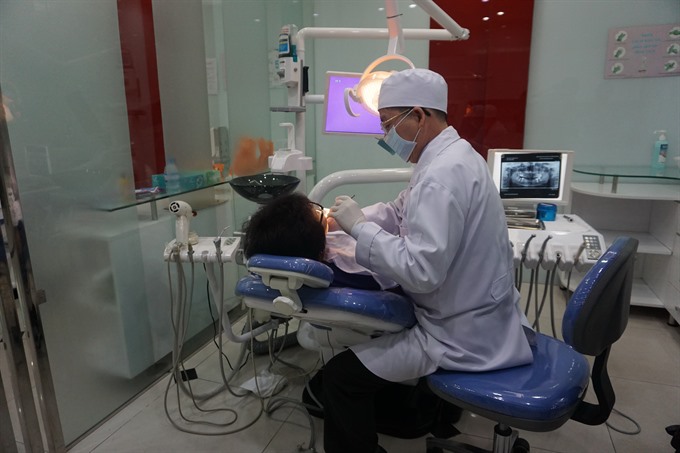
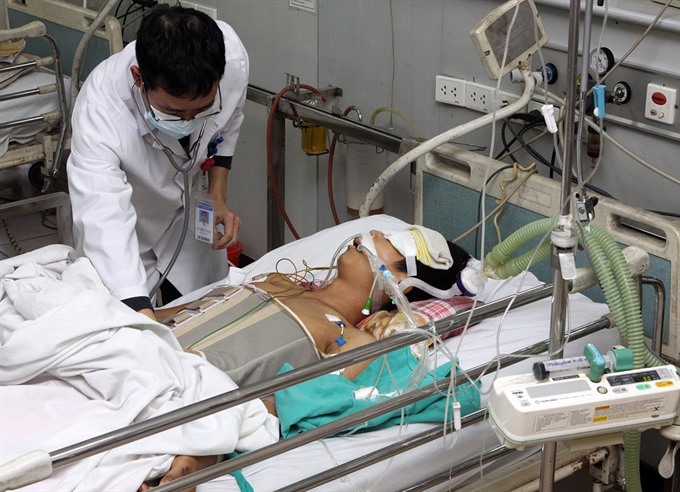 |
| A doctor treats a patient suffering from methanol poisoning in Bạch Mai Hospital. — VNA/VNS Photo Dương Ngọc |
HÀ NỘI — The number of methanol poisoning cases from bad-quality alcohol keeps rising but there are still no quality standards for traditional alcohol, making it difficult to control illegal or sub-standard alcohol, experts have warned.
Methanol is a form of alcohol related to ethanol, the type in beer, wine and spirits, but is much more dangerous.
Illegal producers and sellers often use methanol in liquor as it’s cheaper than ethanol, threatening consumers’ health.
Methanol is converted in the body into formaldehyde and formic acid, which are extremely toxic, according to Doctor Nguyễn Trung Nguyên of Bạch Mai Hospital’s Poison Control Centre.
Most cases of alcohol intoxication are caused by drinking alcohol of unknown origin. As much as 70 to 80 per cent of the alcohol sold in Việt Nam does not have a clear certificate of origin, an official from the Environment Police Department said at a recent conference on methanol-laced alcohol.
The Việt Nam Food Administration and Hà Nội authorities in March inspected 225 alcohol businesses, collected 25 samples and ran tests on three after several cases of alcohol poisoning in Hà Nội came to light. Tests showed that the methanol content of two samples were 900 to 2,000 times higher than permissible levels.
According to head of the Ministry of Trade and Industry’s Department of Science and Technology Nguyễn Phú Cường, there are no official standards for traditional alcohol production, making it difficult for brewers to know how to produce products that meet quality standards and for customers to distinguish between quality and substandard products.
Lương Thị Thu, an alcohol maker in Hà Nội, told the Lao Động (Labour) newspaper that her family has made alcohol using traditional methods for years, mostly for family members, relatives and neighbours.
Most small-scale traditional alcohol makers produce alcohol using their own methods, having learned them from their parents’, she said.
“We are willing to follow national standards on production of traditional alcohol if they are issued and we hope that agencies will soon issue the standards. Without standards for traditional alcohol, it’s hard for our products to be recognised as quality,” she said.
Many alcohol makers in the northern province of Hà Nam also said without national standards, they did not know how to advertise their product quality, meaning their products could be mistaken as sub-standard.
Nguyễn Thị Liên, an alcohol producer in Hà Nội’s Cầu Giấy District, said sometimes her products were taken away by agencies because of a lack of quality certificate.
“National standards on production of traditional alcohol should be issued soon. Qualified producers will get licences while sub-standard ones will be punished,” she said.
Meanwhile, cheap liquor is readily available, with customers struggling to verify substandard products, leaving them at risk of buying methanol-based alcohol.
Vũ Hoàng, an engineer from Hai Bà Trưng District, said he loved drinking traditional wines but did not know how to choose the right wine to avoid methanol.
The lack of standards on traditional alcohol products also causes challenges for agencies’ management efforts.
Deputy head of Hà Nội Market Watch Trần Việt Hùng said it was difficult to handle traditional alcohol because of the lack of specific regulations on the product.
Head of the Directorate for Standards, Metrology and Quality, Trần Văn Vinh, told the newspaper that Việt Nam has national technical regulations for alcoholic products in general and national standards for white wine. The Directorate will propose technical standards on traditional alcohols in response to concerns about the quality of such products.
However, head of the Ministry of Health’s Food Safety and Hygiene Department Nguyễn Thanh Phong said it was impossible to have specific standards for individual products.
In order to prevent alcohol poisoning, the department warned people of not abusing alcohol and asked alcohol producers to make quality alcohol products, he said.
Deputy head of the Directorate for Standards, Metrology and Quality Nguyễn Nam Hải said both traditional and industrial alcohol products should meet general standards for alcoholic products, such as the maximum level of methanol of 100mg per decilitre to prevent poisoning.
Between February 22 and March 7, Hà Nội-based Bạch Mai Hospital’s Poison Control Centre treated 11 patients from 40 to 54 years of age for alcohol poisoning. One patient died. All patients reported symptoms such as extreme tiredness and headache, with some slipping into comas. Their blood tests showed high blood methanol concentrations of 40 to 318 mg per decilitre.
In February, seven people died of alcohol poisoning in the northern province of Lai Châu’s Tà Chải Village. The methanol content in the alcohol they consumed was found to be 4,750 to 5,560 times above the permissible limit. — VNS



